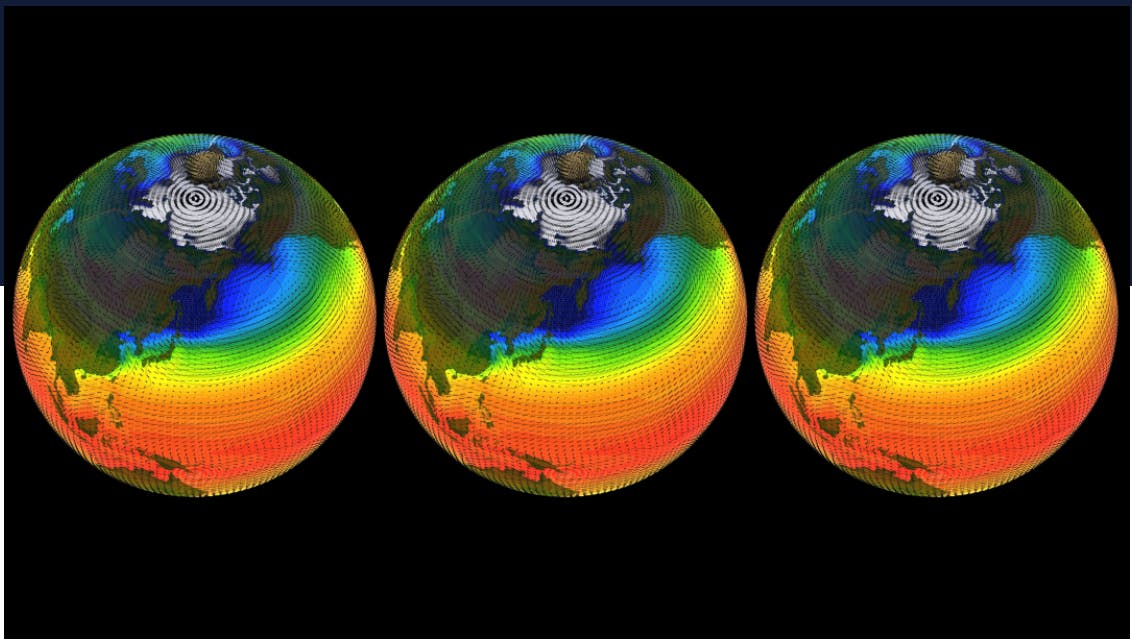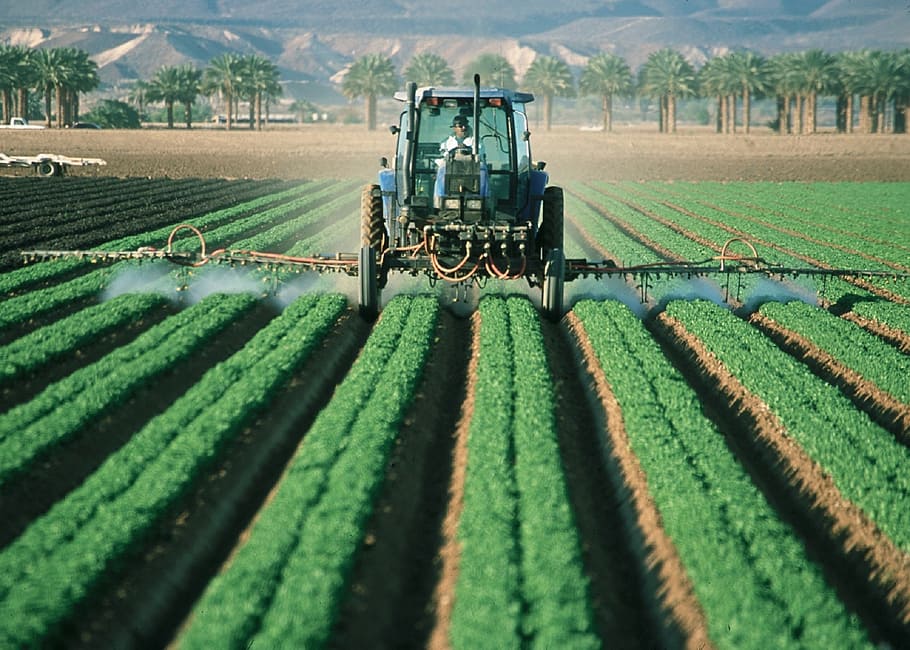
Photo by Arseny Togulev on Unsplash
The 5 Biggest Trends in Machine Learning for Climate Tech
Harnessing the Power of Machine Learning: Transforming Climate Tech with Data-driven Solutions
PS: Subscribe to my blog if you like what you read.
Machine learning (ML) and artificial intelligence (AI) have revolutionized numerous sectors, proving their transformative potential. One such sector is climate technology, where ML is increasingly used to understand complex climate patterns, forecast future scenarios, and enhance sustainable technologies. This article will explore the five most significant trends in machine learning for climate tech.

Climate Prediction Models
Predicting future climate scenarios is a complex task due to the intricacies of climate systems. Traditionally, climate scientists have used physics-based models for this purpose. However, with the advent of machine learning, we are seeing a shift towards data-driven models. With their ability to process vast amounts of data and identify complex patterns, ML algorithms have shown the potential to make climate predictions more accurate and reliable. This trend is poised to continue, with increasing research and development focusing on integrating ML models into climate science.
Here are some of the top climate prediction models, along with the companies that developed them:
Community Earth System Model (CESM) - National Center for Atmospheric Research (NCAR)
CanESM - Canadian Centre for Climate Modelling and Analysis (CCCMA)
FGOALS-g2 - National Center for Climate Science (NCCS) of the Chinese Academy of Sciences
HadGEM3 - Met Office Hadley Centre
IPSL-CM5A-LR - Laboratoire de Météorologie Dynamique (LMD) of the French National Center for Scientific Research (CNRS)
MIROC5 - National Institute for Environmental Studies (NIES) of Japan
MPI-ESM-MR - Max Planck Institute for Meteorology (MPI-M)
NorESM1-M - Norwegian Climate Centre (NCC)
UKESM1 - Met Office Hadley Centre and the Max Planck Institute for Meteorology (MPI-M)
These models are all used by climate scientists to study and predict future climate change. They are constantly being improved and updated as new data becomes available.
Here are links to the websites of the companies that developed these models:
NCAR
CCCMA
NCCS
Met Office
LMD
NIES
MPI-M
NCC
Hadley Centre
MPI-M
Precision Agriculture

Machine learning is transforming agriculture into more productive, efficient, and climate-friendly. Precision agriculture uses ML algorithms to analyze data from satellite images, weather forecasts, soil sensors, and more. This data is then used to make precise decisions about irrigation, fertilization, and pest control, reducing waste and minimizing the environmental impact. This trend is particularly relevant today as the agriculture sector seeks to adapt to climate change and contribute to its mitigation.
Here are a few companies that are at the forefront of innovation in precision agriculture:
John Deere
CNH Industrial
AGCO
Deere & Company
Yara International
Trimble Navigation
Raven Industries
Blue River Technology
Agjunction
Farmers Edge
These companies are developing and deploying new technologies that are helping farmers to improve their yields, reduce their costs, and become more sustainable. Some of the technologies that these companies are working on include:
Drones
Sensors
Machine learning
Artificial intelligence
Big data
These technologies are helping farmers to make better decisions about things like when to plant when to water, and when to harvest. They are also assisting the farmers to track their crops and livestock more closely and to identify and address problems early on.
Precision agriculture is still a relatively new field, but it is proliferating. As the technology continues to develop, it has the potential to revolutionize how food is produced.
Carbon Capture and Storage

One of the significant challenges in combating climate change is reducing the amount of carbon dioxide in the atmosphere. Machine learning is crucial in developing efficient carbon capture and storage (CCS) technologies. For instance, ML algorithms are used to optimize the carbon capture process, increase carbon storage efficiency, and monitor potential leaks. This trend is set to grow, especially considering the increasing importance of CCS in achieving global climate targets.
Here are a few companies that are leading the way in carbon capture and storage (CCS):
Air Liquide
BP
Carbon Engineering
Chevron
Climeworks
Equinor
ExxonMobil
OMV
Shell
TotalEnergies
These companies are developing and deploying new technologies that are helping to capture and store carbon dioxide (CO2) emissions from power plants, industrial facilities, and other sources. CCS is a key technology for reducing greenhouse gas emissions and mitigating climate change.
Here are some of the technologies that these companies are working on:
Direct air capture
Enhanced oil recovery
Ocean storage
Pipeline transportation
Underground storage
These technologies are still in development, but they have the potential to make a significant impact on the fight against climate change.
Renewable Energy Forecasting

With the rise of renewable energy sources like wind and solar power, there's a growing need for accurate power forecasting. Since the output of these sources is highly dependent on weather conditions, predicting their power output is challenging. With its advanced pattern recognition capabilities, machine learning is increasingly used for this task. ML models can process vast amounts of weather data and learn to make accurate predictions, allowing for better grid management and reducing reliance on fossil fuels.
Many companies are working on renewable energy forecasting, using machine learning to process vast amounts of weather data and learn to make accurate predictions. Here are a few examples:
AleaSoft is a Spanish company that provides energy forecasting products and services. It uses machine learning to forecast energy prices, demand, and renewable energy production.
Envision is an American company that develops software for renewable energy forecasting. Its software uses machine learning to forecast solar and wind power generation and energy demand.
Oak Ridge National Laboratory is a US Department of Energy laboratory developing machine learning models for renewable energy forecasting. Its models are being used to forecast solar and wind power generation and energy demand.
The Weather Company is an IBM company that provides weather data and analytics. It is working on developing machine learning models for renewable energy forecasting. Its models are being used to forecast solar and wind power generation and energy demand.
Uptake is a US company that develops software for energy forecasting. Its software uses machine learning to forecast energy prices, demand, and renewable energy production.
These are just a few examples of the many companies working on renewable energy forecasting. As the technology continues to develop, it has the potential to play a significant role in the transition to a clean energy future.
Climate Risk Assessment
Climate change increases risks, including extreme weather events and rising sea levels. Governments, businesses, and communities must understand these risks to plan and adapt effectively. Machine learning algorithms are now used to analyze large datasets and model potential climate risks. These models can forecast the likelihood of extreme weather events, assess the vulnerability of different regions, and guide climate resilience planning.
Here are a few of the most used climate risk assessment models:
Climate Impact Lab (CIL): The CIL is a global research initiative that develops and applies climate risk assessment tools to help decision-makers understand climate change's economic and social impacts.
Climate Risk Index (CRI): The CRI is a global index that ranks countries according to their vulnerability to climate change.
Integrated Climate Risk Assessment (ICRA): The ICRA is a framework for assessing the risks of climate change to different sectors and regions.
Marsh Global Climate Risk Index (MCRI): The MCRI is an index that ranks countries according to their exposure to climate change risks.
World Bank Climate Risk Assessment Tool (WCAT): The WCAT is a tool that helps countries assess their vulnerability to climate change and develop adaptation strategies.
These are just a few of the many available climate risk assessment models. The choice of which model to use will depend on the user's specific needs.
Here are a few of the most used climate risk assessment models that use machine learning:
Climate Engine from Climate Engine: This model uses machine learning to predict the impacts of climate change on different sectors, such as agriculture, water resources, and human health.
EnCORE from the Energy Foundation: This model uses machine learning to assess the risks of climate change to the energy sector.
INCA from the Potsdam Institute for Climate Impact Research: This model uses machine learning to predict the impacts of climate change on different regions of the world.
Mitigation Pathways Explorer from Climate Interactive: This model uses machine learning to explore the different pathways the world can take to mitigate climate change.
World Climate Model from the National Center for Atmospheric Research: This model uses machine learning to predict the Earth's future climate.
These are just a few of the many climate risk assessment models that use machine learning. The choice of which model to use will depend on the user's specific needs.
Here are some of the advantages of using machine learning in climate risk assessment:
Machine learning can help to identify and quantify the risks of climate change that are difficult to assess using traditional methods.
Machine learning can be used to develop more accurate and timely predictions of the impacts of climate change.
Machine learning can be used to identify and develop adaptation strategies that are more effective in reducing the risks of climate change.
However, there are also some challenges associated with using machine learning in climate risk assessment:
Machine learning models can be complex and challenging to understand.
Machine learning models can be biased, which can lead to inaccurate predictions.
Machine learning models can be computationally expensive to run.
Despite these challenges, machine learning has the potential to play a significant role in climate risk assessment. By using machine learning, we can better understand the risks of climate change and develop more effective adaptation strategies.
Machine learning is a vital tool in the fight against climate change. Its ability to analyze vast amounts of data and make accurate predictions transforms climate tech in various ways, from enhancing climate models to optimizing renewable energy use. As we face the challenges of climate change, these machine learning and climate tech trends will continue to evolve and shape our path toward a more sustainable future.

